Bugs. You’re filled with them. Yep, that’s right, you have more bacterial cells in and on your body than human cells… ten times more in fact! (Bacterial cells are simple and much smaller than complex human cells, just in case your brain hurt when you read that). Though this may all gross you out, the reality is that we NEED these bugs.
Bacteria have gotten a bad rap over the years, which has led to a fearful over-sanitized bunch of humans and a whole host of health consequences. A healthy microbiome (the name for the microorganisms in a given environment, i.e.: the human body) is critical in supporting a strong immune system and digestive tract and may even help achieve weight loss and protect against developing allergies. In fact, the gut is frequently referred to as our ‘second brain’ due to the fact that it has as many neurons connected to it as the spinal cord!
This post will help answer some key questions related to gut health including:
- What is the best way to feed your gut?
- What is the difference between a prebiotic and a probiotic?
- What should I look for in a probiotic?
- What foods should I eat to feed the healthy bacteria in my gut?
- What else can I do to improve my gut health?
What is the best way to feed your gut?
There are two main ways of promoting a healthier gut when it comes to our ‘intake’: ingesting prebiotics (the food for the good bacteria) and/or probiotics (the good bacteria themselves). Let’s start with prebiotics.
Because our microbiota can alter quickly in response to a change in our diet or environment, it’s important that we treat this as a life-long way of living and eating versus a fad (temporary) diet. In order for us to benefit from the improved gut health that comes with eating better foods for our microbiome, we need to make better choices consistently (i.e.: every day).
Our gut bacteria need to be fed, and their favourite food is carbohydrates (yes, the ‘evil’ carb, but read on!). What happens if they don’t get these carbs? Either they die OR they turn to your gut lining (responsible for protecting your gut) to get the food. Crazy but true!
Now, before you go reaching for a cinnamon bun, we need to talk about what types of carbohydrates these bugs really need.
A specific type of carbohydrate, complex fermentable starches, are the ones we need to eat. These carbs ferment to produce something called short chain fatty acids, which are made when the healthy gut bacteria ferment fibre in your colon, and are the main source of energy for the cells lining your colon. Short chain fatty acids have anti-inflammatory and anti-cancer properties and might play a key role in the prevention and treatment of the metabolic syndrome, bowel disorders, and certain types of cancer.
Eat a variety of different complex carbohydrates (i.e.: different fruits, vegetables, legumes, whole grains and fermented dairy products) throughout your day, week and month to help feed the various bacteria in your gut and foster diversity in your gut microbiome. Aim for 25-35 grams of fibre a day (you may need to do this gradually, depending on how much fibre you are already eating and how comfortably your body adjusts to the extra fibre).
What is the difference between a prebiotic and a probiotic?
According to the The World Health Organization’s (WHO) 2001 definition, probiotics are “live micro-organisms which, when administered in adequate amounts, confer a health benefit on the host”. Prebiotics on the other hand are non-digestible food ingredients that selectively stimulate the growth of the beneficial bacteria in our gut. Basically, the prebiotics feed the probiotics. There is evidence that shows that eating prebiotics along with a probiotic source may be the best way to go, which makes sense to me!
The research surrounding the use of probiotics is ongoing, and more studies are looking at which type and amount of a given probiotic is best for the treatment a number of different given conditions. Since our guts are like a finger print in that each of us are completely unique, this is a very complex area to study. I’m of the opinion that there is no downside and every potential upside to nurturing our guts and increasing the ‘good guys’, and a taking good probiotic, combined with a diet filled with gut-healthy fibre, makes sense to me. If you already have a pre-existing health condition such as Crohn’s disease it’s best to discuss the use of a probiotic with your physician first.
What should I look for in a probiotic?
There are SO many options out there for probiotics, it’s a confusing space on the store shelf! From the brand, dose, strain and format, it’s enough to make a persons’ head spin!
First, look for a reputable brand that you trust. I’ve worked with Genuine Health (they sponsored this post) for a couple of years, and have had a chance to learn about the scientific approach to the products that they make, which is why I feel good about using their brand. Their new probiotic also happens to be vegan, non-GMO, soy-free and gluten-free.
The Genuine Health Advanced Gut Health formula combines 15 strains of probiotics carefully selected for their diversity (specific strains are shown to have specific benefits throughout the body), mimicking the balance of the human microbiome. The strains are treated with the utmost care – in a temperature and humidity-controlled environment, and are processed in a way that makes them shelf-stable. A vegan, delayed-release capsule helps ensure that the bacteria pass through the stomach acid to reach the gut where they thrive.
Their probiotics come in two different levels of potency: 15 billion CFU or 50 billion CFU (colony forming units). Genuine Health recommends going with a higher CFU during states of high stress, digestive complaints, or during times when antibiotics are used. Click here to locate a retail location if you are interested in purchasing them!
As a side-note, I got quite sick this winter and had to go on two rounds of antibiotics before getting better (I tried to avoid it, but it was one of those necessary cases). The first round (taken without any probiotics) annihilated my gut leading to a VERY uncomfortable experience…I won’t elaborate, you’re welcome;). My doctor had to put me on an even stronger dose antibiotics when the first round didn’t work, at which time I took the 50 billion CFU Genuine Health Advanced Gut Health Probiotic both before, during and after the round of antibiotics. My gut was perfect, zero side effects. Now, I know this is a study of one (n=1), but consider me sold.
What foods should I eat to feed the healthy bacteria in my gut?
There are some foods that do a better job of feeding our gut than others. In general, aim to include a wide variety of different plant foods in your diet and you’ll hit it out of the park! The following foods are great sources of fermentable prebiotic fibre:
- Bananas
- Beans and lentils
- Fermented protein powders
- Fermented foods (i.e.: Kimchi and sauerkraut), kombucha and miso
- Oats and barley
- Kefir and yogurt
- Onions and leeks
- Garlic
- Apples
- Asparagus
Chicory Root and Jerusalem artichokes are also great sources of prebiotic fibre, but aren’t as easy to source.
What else can I do to improve my gut health?
- Start young. Studies show that having a baby via a vaginal delivery is the best way to help your baby get a strong start towards a healthy gut by exposing him or her to the mom’s bacteria during the delivery process (our guts start off as ‘clean’, so this initial exposure helps babies develop their own healthy bacteria or ‘starter microbes’ from birth). Breastfeeding is another way to encourage a healthy infant gut: breastmilk is a microbiota superfood!
- Expose yourself to different environments. Literally expose yourself to a variety of environments, including animal/pet exposure (children raised on farms are less likely to have allergies) and gardens (what a great way to connect with your children and teach them about food!). Travel around where possible to expose your gut to new ‘friends’.
- Don’t be a clean freak. There is something called the hygiene hypothesis, which states that a lack of early childhood exposure to bacteria or germs germs does not give the immune system a chance to develop resistance to diseases and suppresses the natural immune system. Routine use of antibiotic soaps and hand sanitizers may not be the best thing after all! Reduce the use antibacterial cleaners in the house and use natural cleaners where possible (lemon juice, baking soda and vinegar for example).
- Lay off the antibiotics unless necessary. Antibiotics discriminate to varying degrees between good and bad bacteria (depending on the spectrum), producing collateral damage in their wake. There is a time and a place for antibiotic use, which should be reserved for when they are truly needed. Talk to your physician about any concerns you may have.
- Rest up and chill out. A lack of sleep and stress both reduce the gut flora. Just another reason among the heaps of others to catch your zz’s!
We start almost every day with a healthy smoothie, and this “Good Gut Smoothie” has grown to be a favourite of mine! Warning: this is a HEARTY smoothie, and gets thicker the longer it sits! It’s filled to the brim with healthy gut food and will leave you feeling full for longer due to a healthy dose of fibre and a scoop of protein powder.
‘Good Gut’ Green Smoothie Recipe
Makes 1 generous serving
Blend together the following ingredients in your blender (I use the new Vitamix Ascent)
- 1/2 cored apple (skin on), cut into chunks
- 1/2 banana
- 1/3 c. plain 2% Greek yogurt
- 1/4 c. orange juice (with pulp)
- 1/2 c. your favourite milk (ie: almond etc)
- 1 Tbsp. flax seeds
- 2 Tbsp. rolled oats (any version – optional as it adds a lot of bulk)
- 1 1/2 c. loosely packed kale or spinach leaves
- 1 c. ice cubes
- 1 scoop Genuine Health fermented proteins+ natural vanilla protein powder (vegan or Greek Yogurt variety)
SHOP THE POST
Thank you to Genuine Health for sponsoring this post! All opinions are my own.


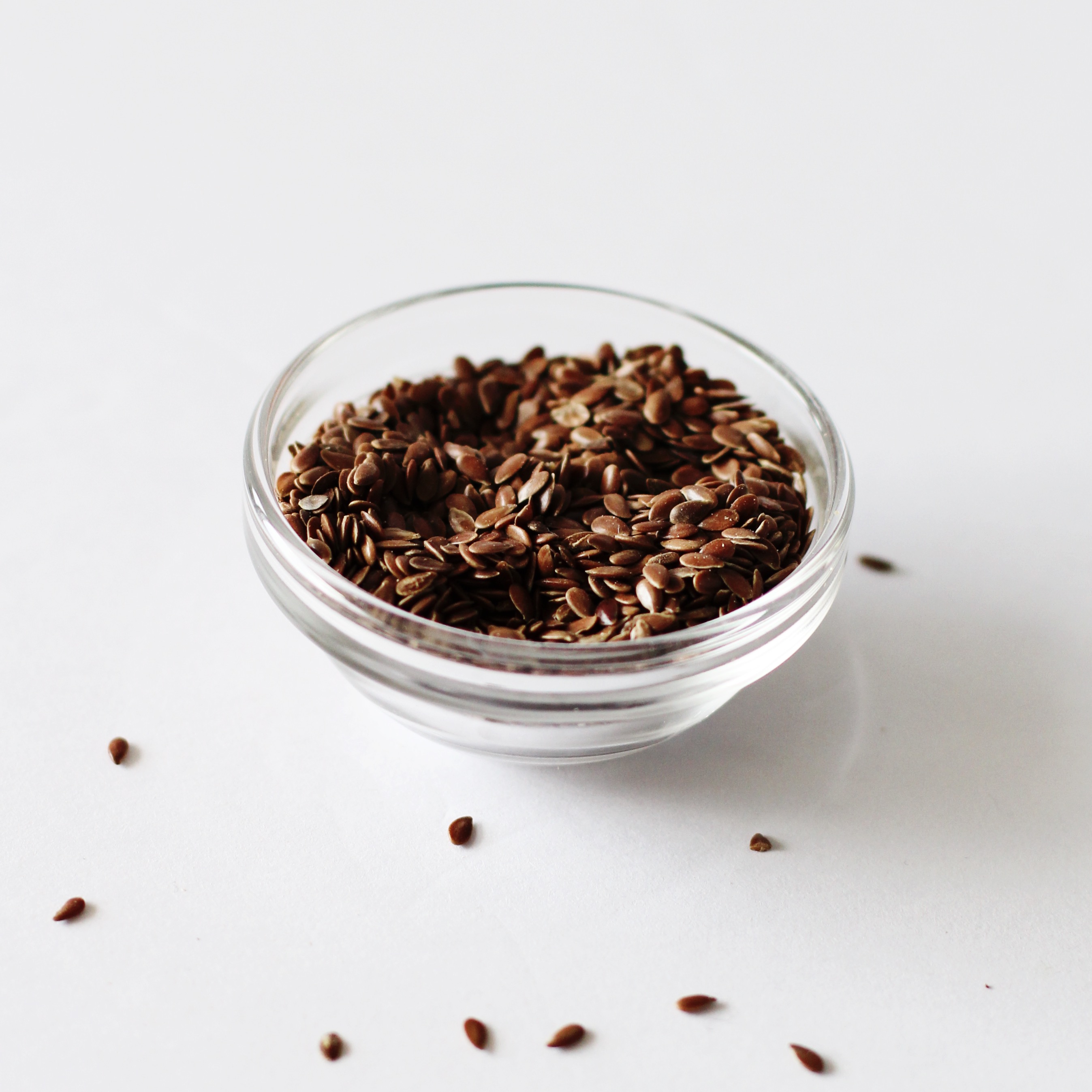
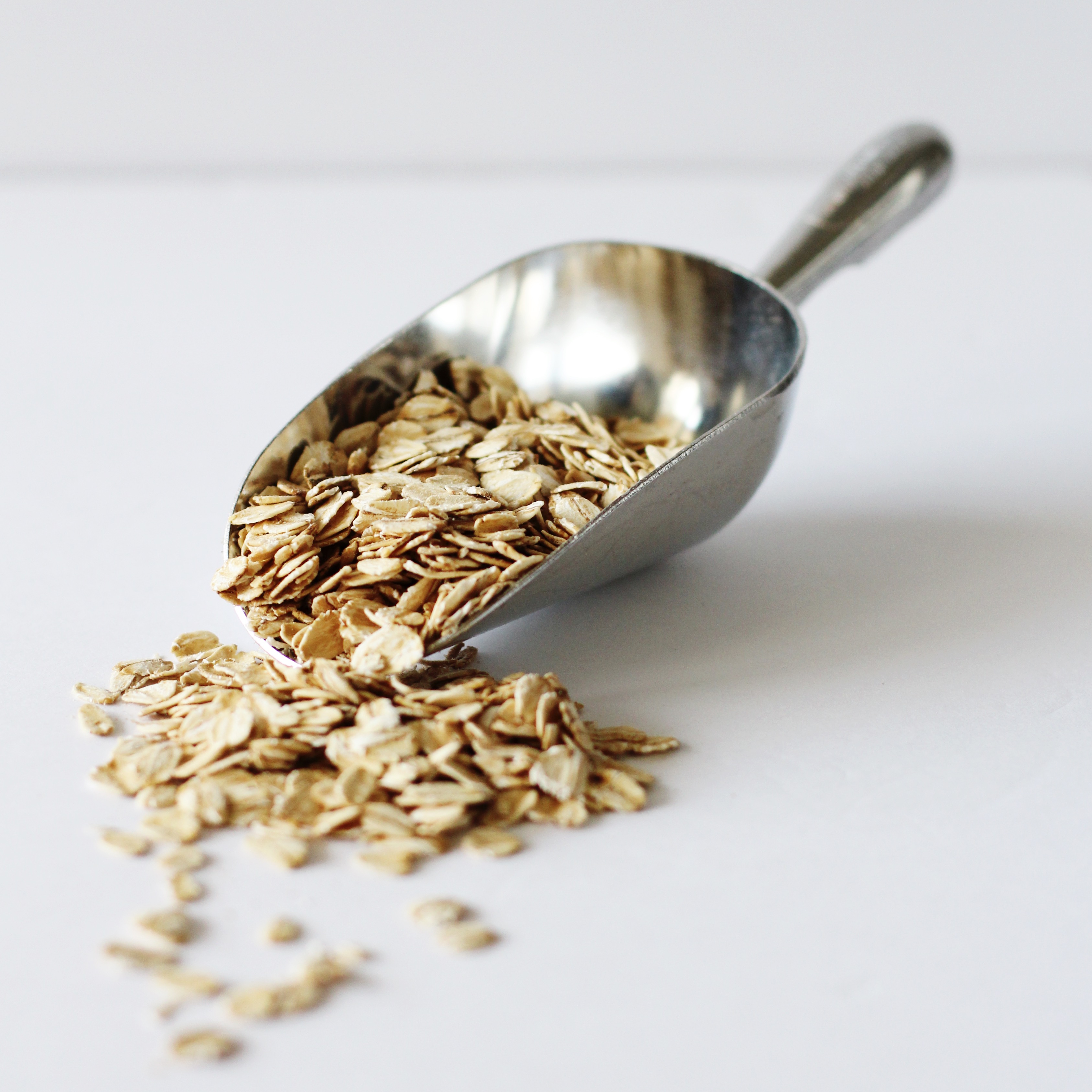
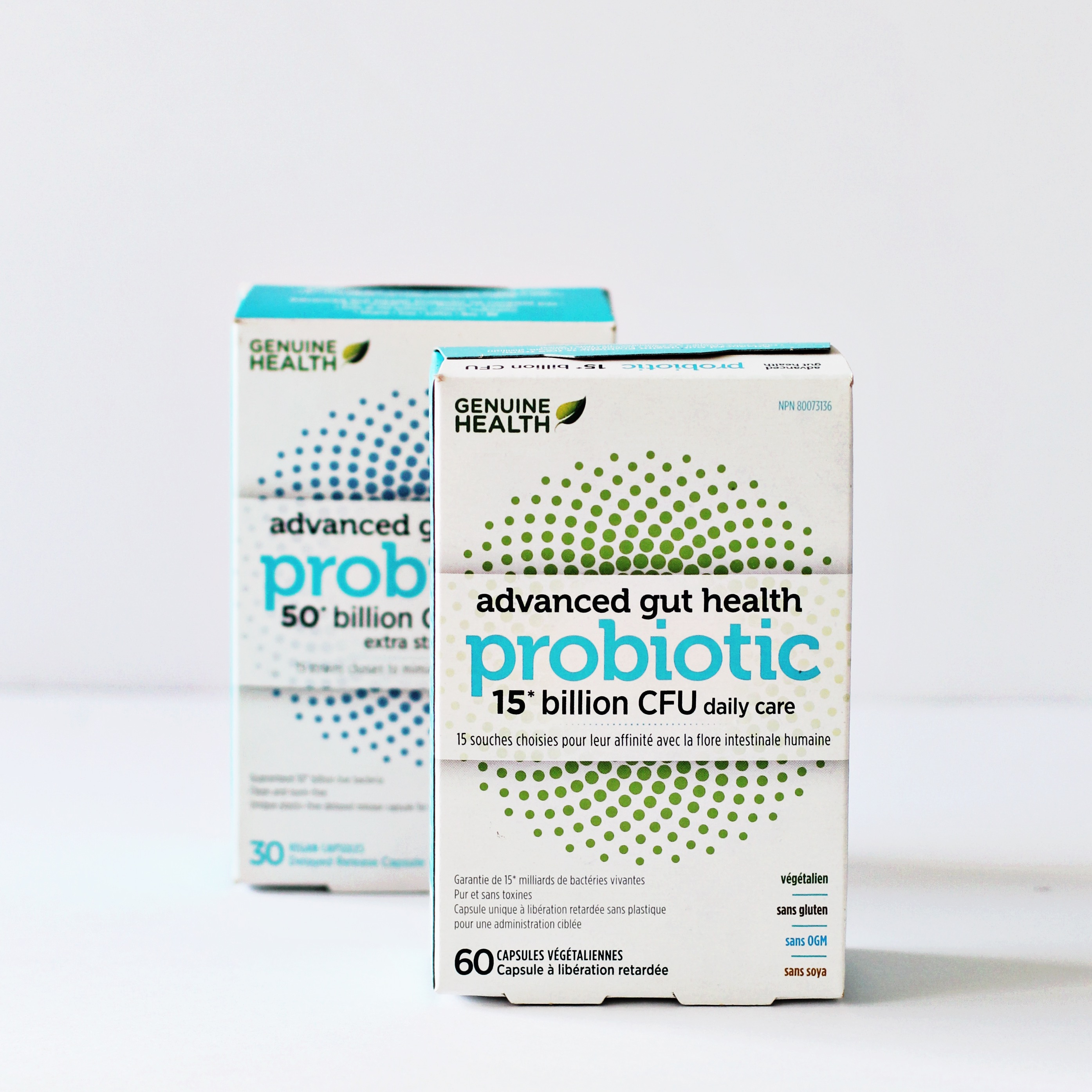
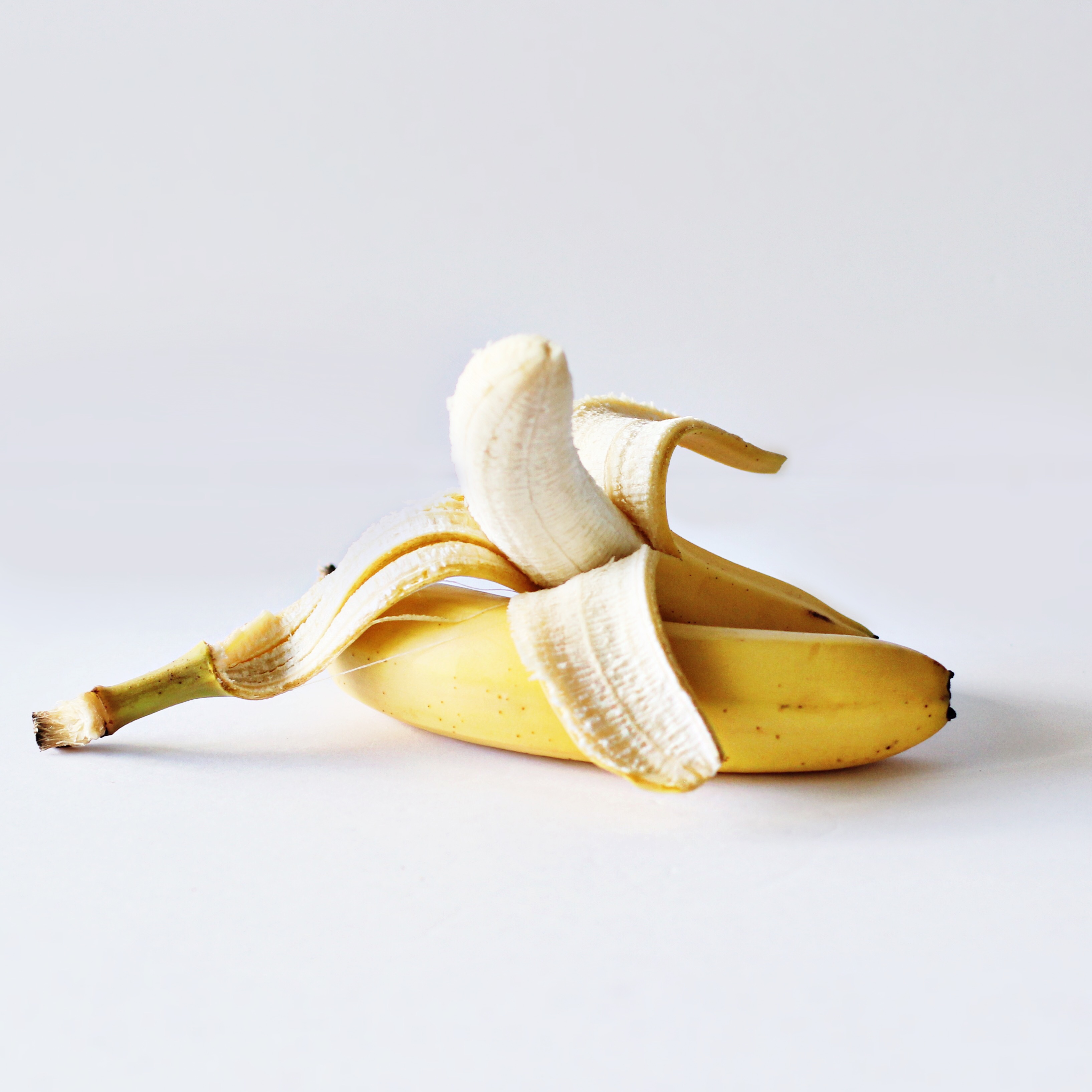
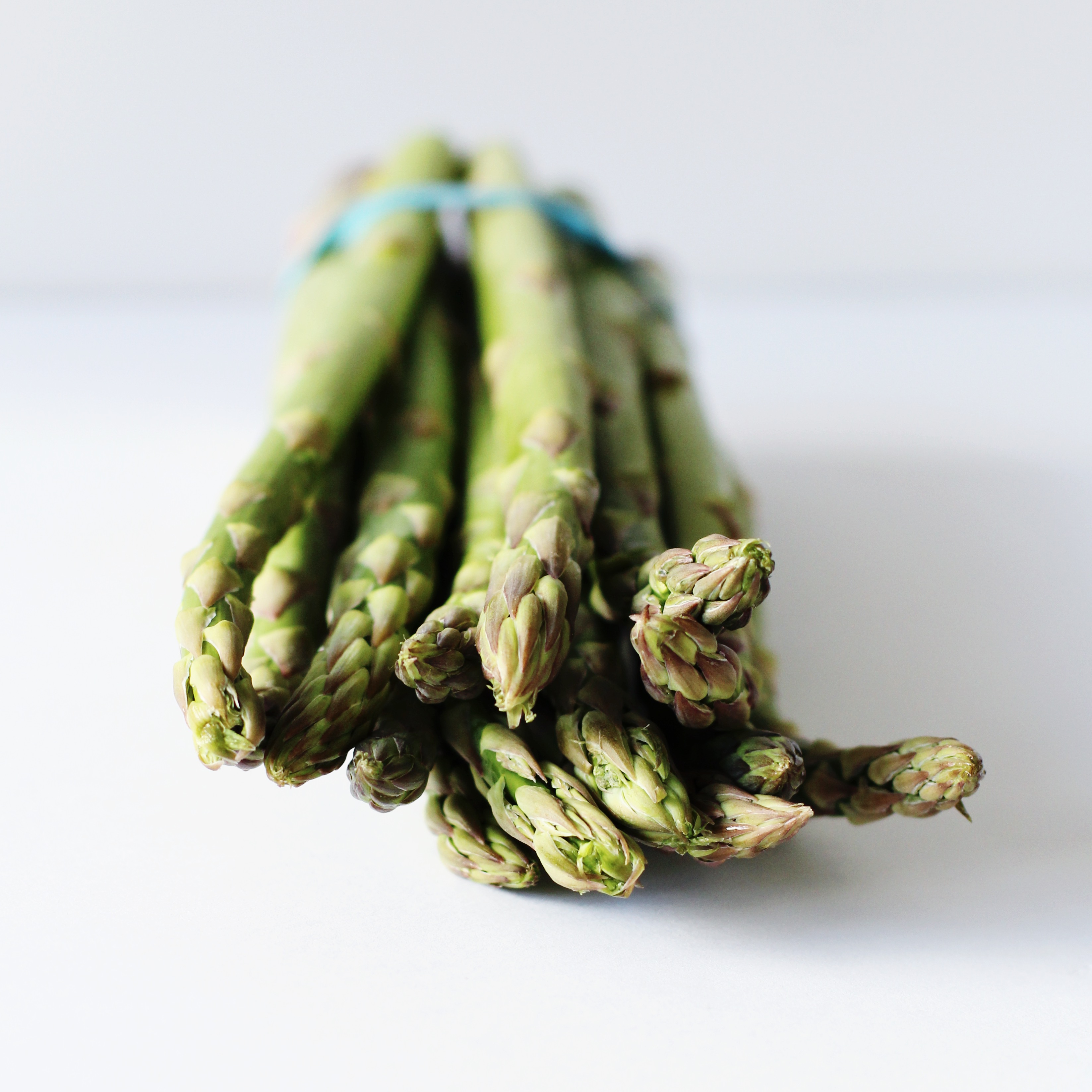
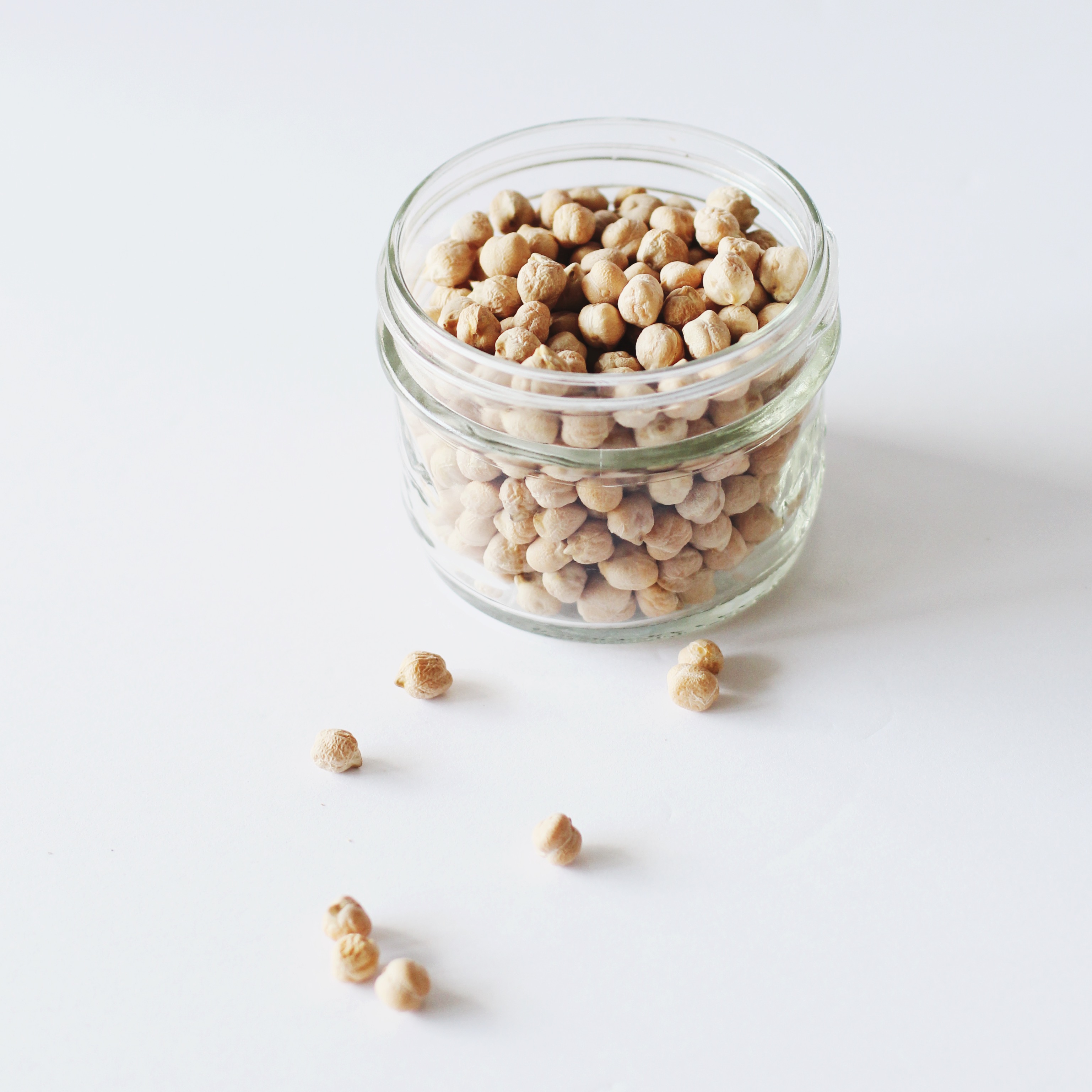
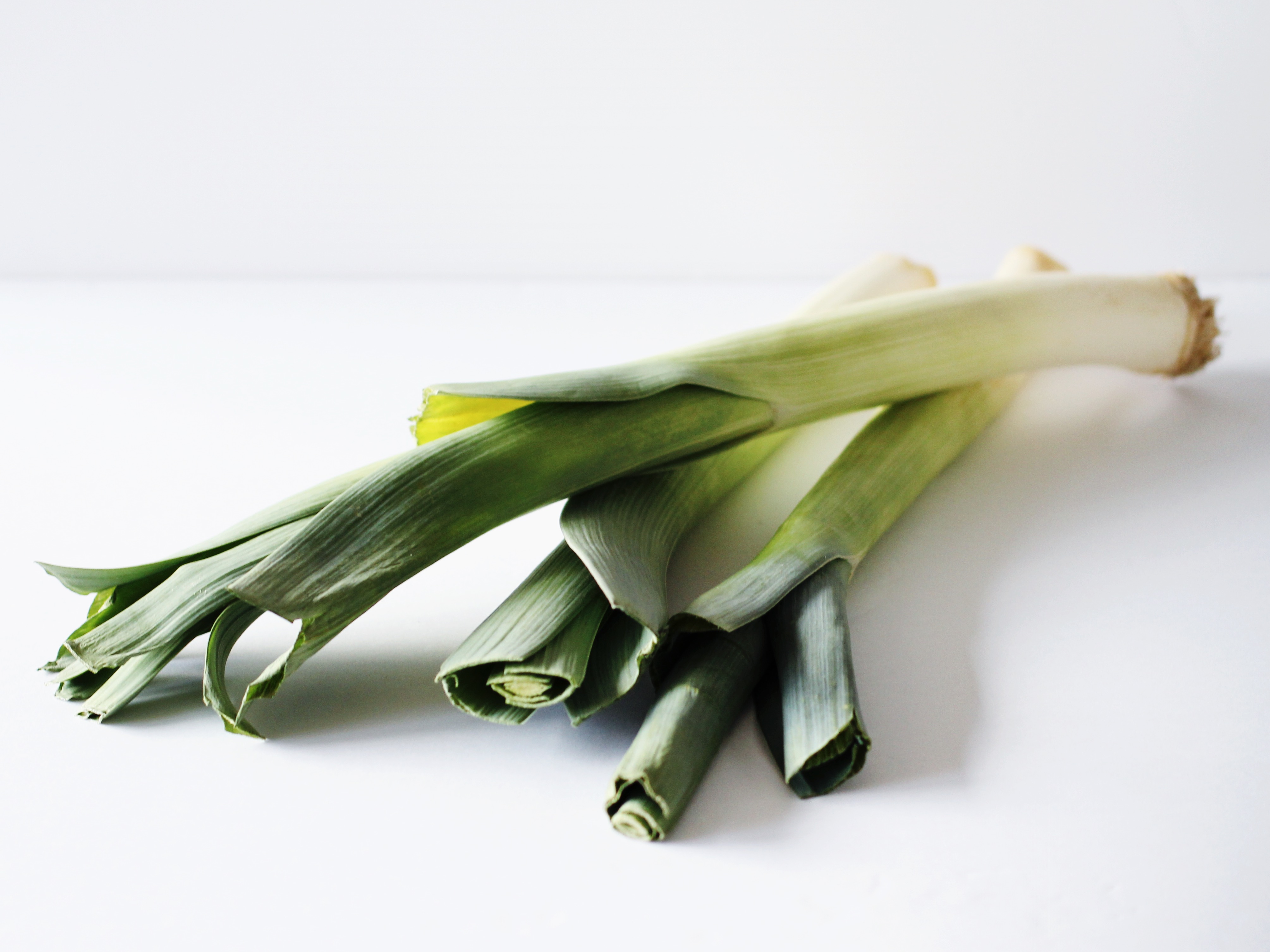
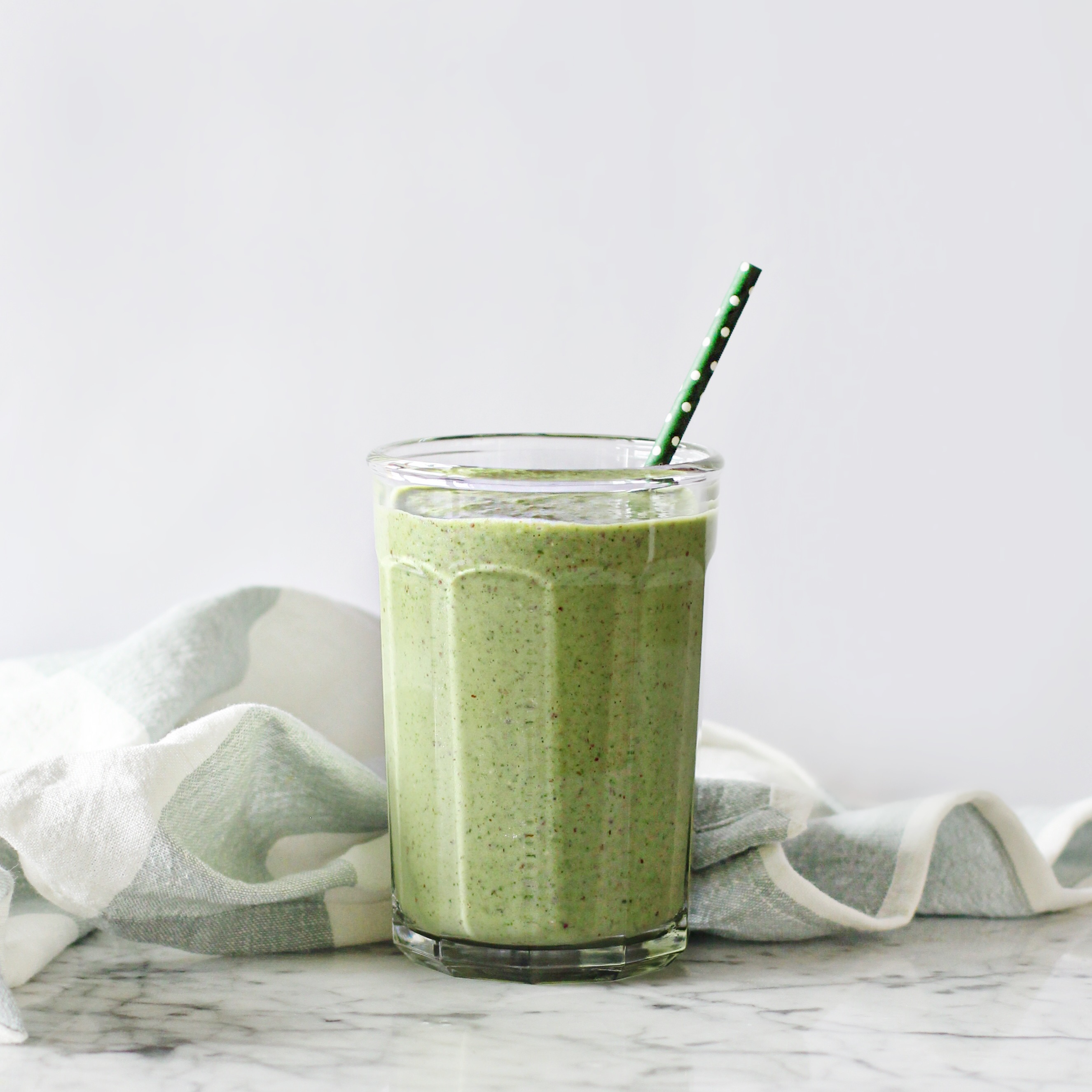

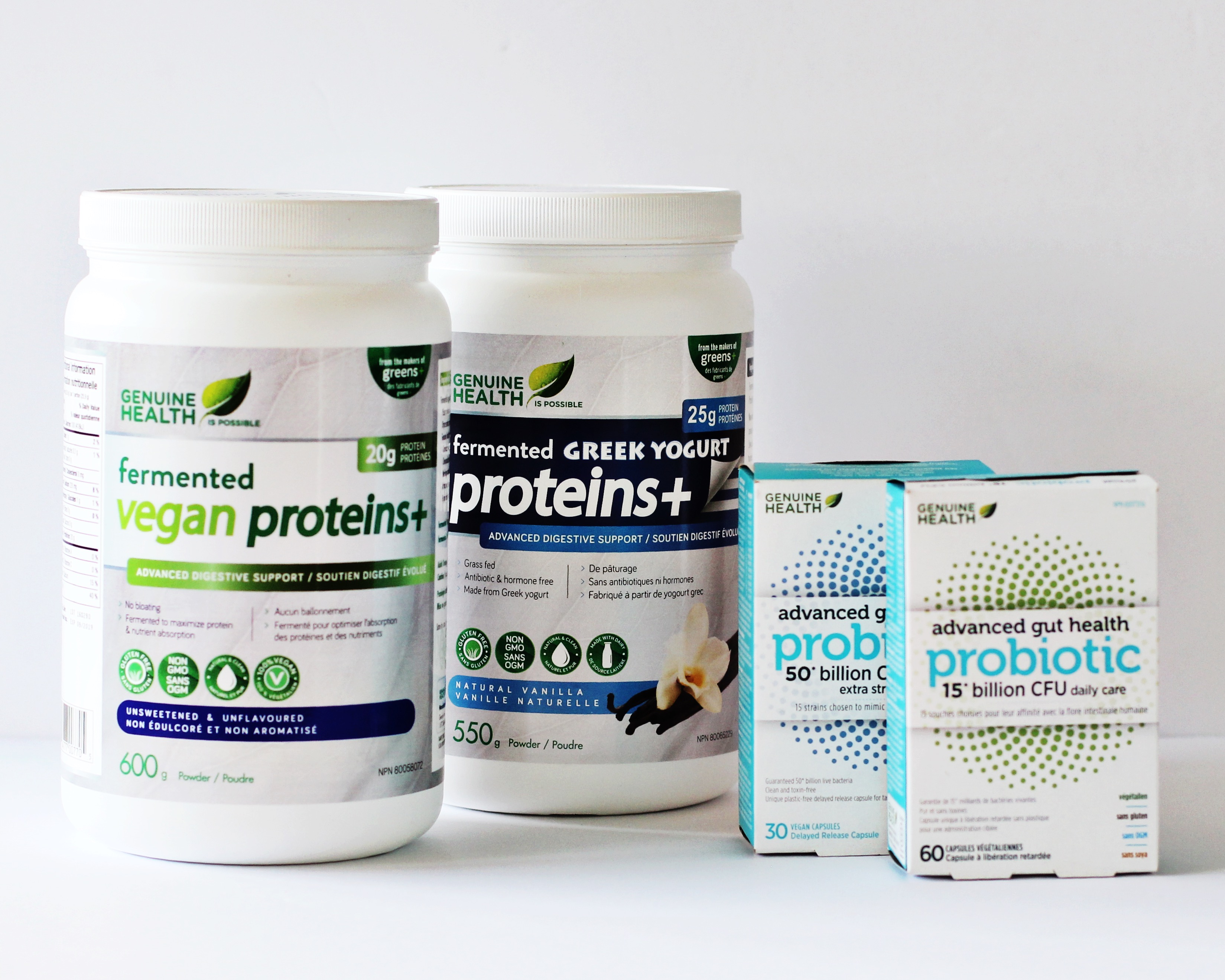


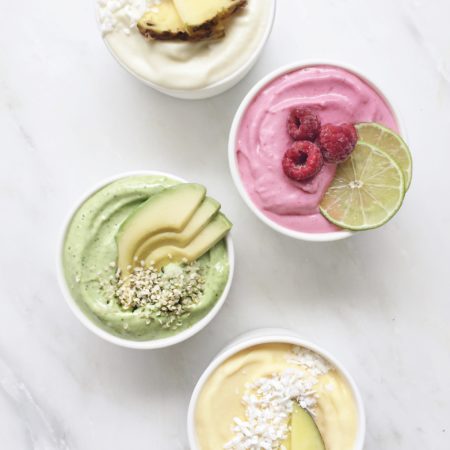

Thanks for the wonderful post Tori! I’ve been taking the Genuine Health probiotics and I can say they are one of the better ones for me.
Thanks Tori for this info. Regarding probiotics for baby, is Bio Gaia safe to use longer than the 21 day recommended use on the box? I breastfed my daughter and had to stop 1 month ago. The formulas were giving her tummy trouble but the bio gaia seemed to be helping her and she never caught the nasty bug in our house either. Unfortunately she isn’t at the age I can introduce her foods like Kefir and Yogurt to help promote a healthy gut. Thank you!
Hi Melanie! That’s a great question. I would suspect that it would be fine, but would suggest consulting your physician first. I don’t know why that recommendation would be on the package to be honest, as gut bacteria are transient and need a constant supply to maintain the same flora.
This is great information! I started using the Genuine Health fermented Greek yogurt protein after your 10-Day Smoothie Challenge post, and the improvement in my gut has been phenomenal.
Hi Joy that’s so awesome to hear! Thank you for sharing I love the feedback!
Thanks Tori for the great info
We went to a new restaurant in Kelowna on Rutland road and Gray road (right on the corner, across from the Salvation Army thrift store. )
Its called Dosa Crepe Caffe (they are on facebook also. )
They have gluten free selections and also fermented rice and lentil crepes that are very gut friendly. It is yummy East Indian food. Sooooo delish! (I just ask for as little heat as possible…) they are very friendly!
Here is a bit of info from their fb page…
“A dosa is a type of South Indian crepe or pancake made from naturally fermented rice and lentil batter .Dosa can be filled with vegetables, meat, potatoes and sauces and are typically served hot, either folded in half or rolled like a wrap with sambar and chutneys.
The dosa is one of the most ancient dishes, dating back to the 5th century AD. Dosa is often pronounced or spelled as dosay or dosai. The savory pancake is eaten for breakfast, lunch, dinner, or even as a snack item. Dosas are usually considered appropriate for vegan and individuals with wheat allergies (Gluten-free). They also appeal to the health conscious, as they are usually high in carbohydrates , contains a healthy amount of protein. and low in calories and fat. Besides being delicious, they are known for being nourishing and digestible (due to the fermenting process).
South Indian foods are extremely flavorful and can contain a myriad of tamarind, coconut, dal and cilantro. Seasonings aren’t meant to overpower or mask foods but rather to enhance natural flavors and to encourage the subtle blending of the combined vegetables. They are also prepared in more health conscious ways.”
Enjoy!
Thanks Gay sounds DELISH!!!
I give my toddler probiotics, adding it to his yogurt. Is that a problem adding probiotics to yogurt that’s prebiotic? Thx
Just wondering if probiotics can help repopulate the gut for lactose intolerant individuals? I have seen some research going both ways with it, and would love to hear your thoughts!
Hi Tori, I bought the Fermented Greek yogurt protein as shown above. I tried it once then I was concerned about the sweetner in it. Please educate me on this product. I really want to use it.
Hi Rene thanks for the question. The sweetener is Stevia, which, according to the literature, is completely safe. It comes from a plant, and has a very sweet concentrated taste, so takes very little of it to provide a lot of sweetness. We use it in our house, it is the only alternate sweetener that I will use. I hope this helps!
Hi Tori.
Any advice around healthy gut for children? My daughter is 18mths and recently had an ear infection requiring antibiotics😫. What can I give the kids that’s safe? Thx
Just made this smoothly, absolutely amazing!
Thank you Cherie I’m happy you loved it as much as we did!!!
Hi Tori!
I can’t get enough of this smoothie! So yummy! Thank you for all of your great recipes! I come to your site again and again for delicious inspiration that I can feel good about. Keep up the good work!
Alyssa xo
Alyssa thank you so much that made my day!!! Thank you for following along and for your sweet feedback, have a wonderful week! xo
Awesome advice Tori! I’m going to make your Green Smoothie for sure!
Tori, thank you. I have diverticulitis and other assortments of gut issues. I have found the information in the post very helpful. ❤️
Hi Laura thanks for the feedback! I’m so happy it was helpful!
Tori! So glad I found this info. My family has been sick a lot this winter & I’m hoping to make some healthy changes for the new year. Finding a good probiotic is one of them so I am definitely giving this one a try. I know you have kids yourself. Any recommendations for a baby/children’s probiotic? My daughter is 1 for reference. Thanks!
Hi Rachel! Thanks for the nice comment! I think that Bio Gaia or Bio K are both good options for kids! Take care!
Tori
Hi there! Am I able to use ground flax seed? Would it still be the same measurement?
Sorry Tori is this the green smoothie I see you make for your kids? and if so, is it okay to leave in the protein powder? I have a little one almost 2years old and he is such a picky eater and was hoping this might be a good way to get some veggies in him. so can I give him protein powder ? sorry might be a silly question. 🙂
thank you – Mary
Hi Mary,
Yes it is that smoothie and it’s not a silly question at all! I don’t recommend giving kids protein powder, it’s too much protein for their little bodies. The smoothie without the powder is what I give my boys and they love it!
Have a great week!
Tori
Hi Tori! I love following you on Instagram and love reading your blog. Very inspiring as a mom of two boys as well. I was curious if you will post the recipe for the granola bars you made with Charlie a few days back. They looked amazing and I’d love to make them for our family. Thanks so much!
Thank you Erin! You read my mind!!! I’m just finishing up the post right now, will have it live by the end of the day:)
Have a great day!
Tori
Hi Tori, this looks like a fantastic smoothie! Do you have any suggestions for a banana substitute? Or would it work to just leave it out? That’s the one food I’ve just never been able to stomach. Thanks so much! Love your blog 🙂
Hi Alison! I would just add a half an avocado instead to add the creaminess. And thank you so much for the compliment! Tori
Hi Tori! Is this protein powder good as a meal replacement? How many calories are in this green smoothie?
Hi Dee,
It isn’t a meal replacement, just a protein supplement. I haven’t calculated the calories in the smoothie sorry!
Hi Tori!
I was just wondering what is a good yogurt if you’re lactose intolerant/sensitive to milk proteins and also have chrons?
Hi Afsha. There are a few brands out there – since you have a sensitivity to the milk proteins and not just the lactose (most yogurt has far less lactose than milk for instance as the bacteria used in making yogurt breaks a lot of it down), I would try a coconut yogurt. Probably one of the best I’ve tried is the Yoso. I hope this helps!